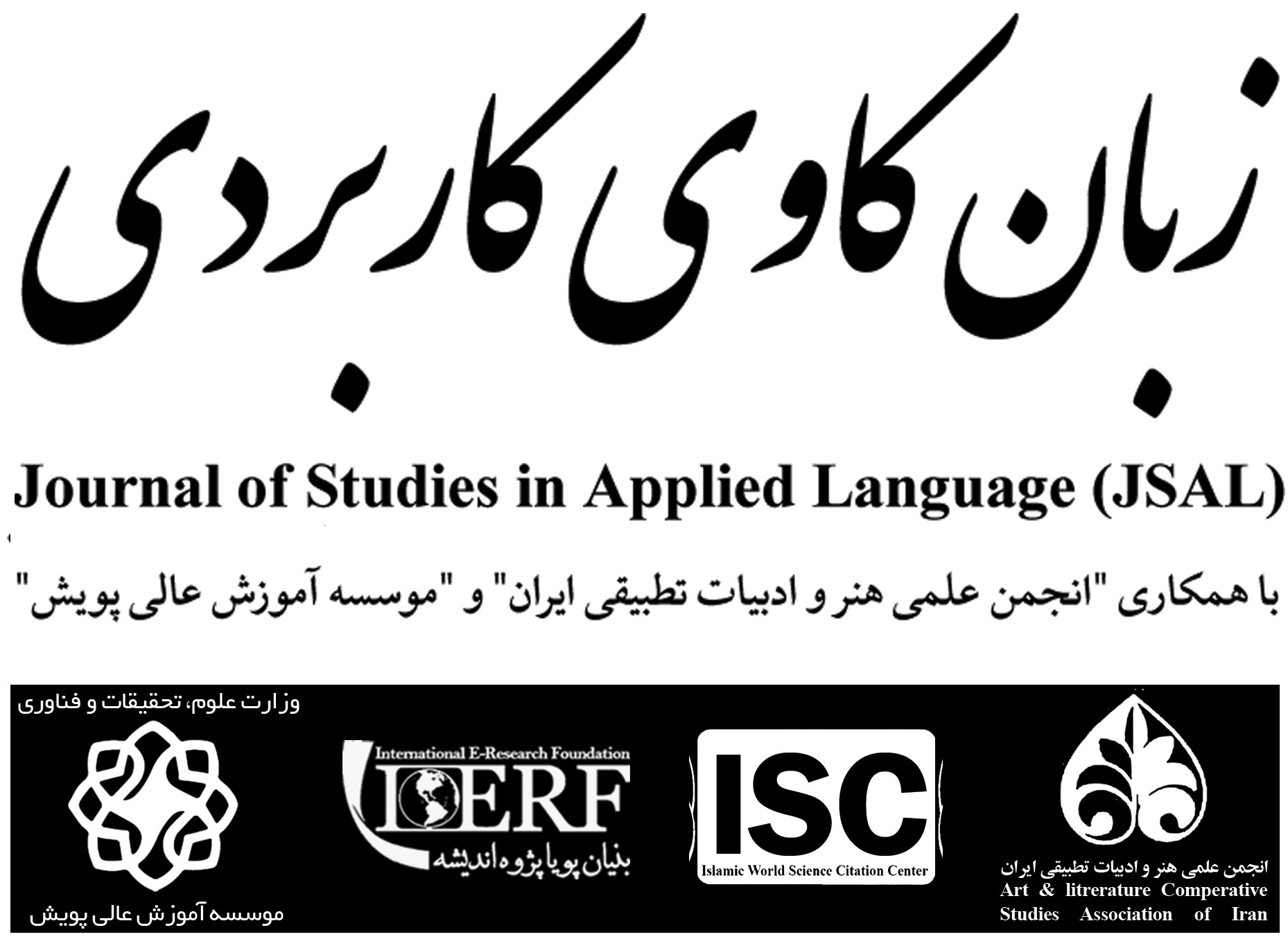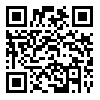Volume 6, Issue 4 (Journal of Studies in Applied Language (JSAL) 2023)
JSAL 2023, 6(4): 27-45 |
Back to browse issues page
Download citation:
BibTeX | RIS | EndNote | Medlars | ProCite | Reference Manager | RefWorks
Send citation to:



BibTeX | RIS | EndNote | Medlars | ProCite | Reference Manager | RefWorks
Send citation to:
Ghorbani V, Mamashli S. (2023). Examining the Effectiveness of Reading Tasks Versus Listening Tasks in the Improvement of Vocabulary Learning in Iranian High School Learners Based on Vision Series: Dissecting the High School English Books [In English]. JSAL. 6(4), 27-45. doi:10.61186/jsal.6.4.27
URL: http://jsal.ierf.ir/article-1-102-en.html
URL: http://jsal.ierf.ir/article-1-102-en.html
1- Ph.D. of ELT, Instructor at Islamic Azad University of Gonbad Kavoos , s39611171003@phd.araku.ac.ir
2- M.A. Student of TEFL, Shahrood university of technology
2- M.A. Student of TEFL, Shahrood university of technology
Abstract: (2474 Views)
Exploring the relationship between listening skills and reading skills with the vocabulary level of students is a hot topic in the history of language teaching which has attracted the attention of many scholars in the field of ELT. Therefore, the present research study tried to probe the effect of reading passages and listening tasks on vocabulary retention and learning of Iranian male high school students based on the VISION series, the newly published English books in Iran for high school students. Sixty students were chosen and divided into two experimental groups, that is one experimental group for listening tasks and one experimental group for reading tasks. At first, a pretest was run to check their language level, especially their lexical level and then both groups went through treatment, and at the end, immediate and delayed posttests were run to check the retention and learning of new words. It should be noted that during the treatment sessions, the meaning of the new words was taught through L1 translation, synonyms, and antonyms. In the reading section, the students should take a multiple choice exam of new words and for the listening section, the students went through answering the meaning of new words orally. After the treatment session, the students went through immediate and delayed posttest. The interval between immediate and delayed posttest was one month. The new words were chosen from the tenth-grade English book high school, that is, Vision1. Then, by using SPSS software including mean comparison and descriptive statistics, the data were analyzed and the findings showed that both types of tasks, that is, reading and listening tasks had an effect on the improvement of vocabulary level of the students but the reading passages outperformed the listening passages. The mean of the reading group was 16 and 15 for both immediate and delayed posttests but the mean of the listening group was 14 and 13 respectively. Also, there was a significant difference between the means of both groups in both posttest 1 and posttest 2. All in all, the results disclosed that the reading section of the Vision series, especially Vision 1 for tenth graders, is much more effective in the improvement of the vocabulary level of high school students compared to the listening section of Vision1. The current findings and results could help teachers, material developers, and book authors.
Keywords: Language Teaching, Reading Passages, Listening Tasks, Vocabulary Learning, Vocabulary Retention, Vision Series
Type of Study: Research |
Subject:
Language Teaching
Received: 2022/06/27 | Accepted: 2023/03/1 | Published: 2023/11/1
Received: 2022/06/27 | Accepted: 2023/03/1 | Published: 2023/11/1
References
1. Adams, M.J. (1990). Beginning to read: Thinking and learning about print. MIT Press.
2. Bahrick, H. P. (1984). "Semantic memory content in permstore: Fifty years of memory for Spanish learned in school". Journal of Experiment Psychology: General, Vol. 113, No. 1, pp. 1-31. DOI: 10.1037/0096-3445.113.1.1 [DOI:10.1037/0096-3445.113.1.1]
3. Bird, D. (1953). "Teaching listening comprehension. Journal of Communication", Vol. 3, pp. 127- 130.
4. Brown, R., Waring, R., & Donkaewbua, S. (2008). "Incidental vocabulary acquisition from reading, reading-while-listening, and listening to stories". Reading in a Foreign Language, Vol. 20, pp. 136-163.
5. Chang, C-S. (2007). "The impact of vocabulary preparation on L2 listening comprehension, confidence, and strategy use". System, Vol. 35, pp. 534-550. DOI:10.1016/j.system.2007.06.003 [DOI:10.1016/j.system.2007.06.003]
6. Chang, L. (2012). Investigating the relationships between Chinese university EFL learners' metacognitive listening strategies and their comprehension and incidental vocabulary acquisition from listening tasks (Doctoral dissertation). University of Auckland, New Zealand.
7. Cho, K.-S., & Krashen, S. (1994). "Acquisition of Vocabulary from the Sweet Valley Kids Series Adult ESL Acquisition". Journal of Reading, Vol. 37, pp. 662-667.
8. Cho, K.S., Ahn, K., & Krashen, S.D. (2005). The Effects of Narrow Reading of Authentic Texts on Interest and Reading Ability in English as a Foreign Language. Reading Improvement, 42, 58.
9. Coakley, C., & Wolvin, A. (1997). Listening in the educational environment. In M. Purdy & D. Borisoff (Eds.), Listening in everyday life: A personal and professional approach (2nd ed.) (pp. 179-212). University Press of America.
10. Dufon, P. & Fong, C. H. (1994). "L1 and L2 vocabulary glosses in L2 reading passages: Their effectiveness for increasing comprehension and vocabulary knowledge". Journal of Research in Reading 17.1, 19-28. DOI: 10.1111/j.1467-9817.1994.tb00049.x [DOI:10.1111/j.1467-9817.1994.tb00049.x]
11. Ellis, R. (1995). "Modified oral input and the acquisition of word meanings". Applied Linguistics, 16, 409-441. DOI: 10.1093/applin/16.4.409 [DOI:10.1093/applin/16.4.409]
12. Farrokhi, F., & Modarres, V. (2012). "The effects of two pre-task activities on improvement of Iranian EFL learners' listening comprehension". Theory and Practice in Language Studies, Vol. 2, No. 1, pp. 144-150. DOI: 10.4304/tpls.2.1.144-150 [DOI:10.4304/tpls.2.1.144-150]
13. Ferris, D. (1998). "Students' views of academic aural/oral skills: A comparative needs analysis". TESOL Quarterly, Vol 32, pp. 289-318. DOI: 10.2307/3587585 [DOI:10.2307/3587585]
14. Feyten, C. M. (1991). "The Power of Listening Ability: An Overlooked Dimension in Language Acquisition". The Modern Language Journal 75:173-80. DOI: 10.2307/328825 [DOI:10.2307/328825]
15. Ghorbani. V. & Zafaranai, P. (2022). "Examining the Effect of Vision's Series Listening Tasks on the Improvement of Listening Ability of Iranian High School Students Versus Top Notch Listening Tasks: Dissecting the High School English Books. In press. Journal of Language Teaching, Literature & Linguistics (JLTLL).
16. Harley, B. (1996). "Introduction: Vocabulary learning and teaching in a second language". The Canadian Modern Language Review, Vol. 53, No. 1, pp. 3-12. [DOI:10.3138/cmlr.53.1.3]
17. Haycraft, J. (1978). Teaching vocabulary: An introduction to English language teaching. Longman.
18. Hedge, T. (2000). Teaching and learning in the language classroom. Oxford University Press.
19. Hernandez, S. S. (2004). The effects of video and captioned text and the influence of verbal and spatial abilities on second language listening comprehension in a multimedia learning environment. PhD dissertation, New York University.
20. Kang, E. Y. (2015). "Promoting L2 vocabulary learning through narrow reading". RELC Journal, Vol. 46, pp. 165-179. [DOI:10.1177/0033688215586236]
21. Krashen, S. (2004). "The case for narrow reading", Language Magazine, Vol. 3, No. 5, pp. 17-19.
22. Lee, S.H. (2003). "ESL learners' vocabulary use in writing and the effects of explicit vocabulary instruction". System, Vol. 31, pp. 537-561. [DOI:10.1016/j.system.2003.02.004]
23. Malone, J. (2018). "Incidental vocabulary learning in SLA, effects of frequency, aural enhancement, and working memory". Studies in Second Language Acquisition, Vol. 40, No. 3, pp. 651-675. [DOI:10.1017/S0272263117000341]
24. Mendelsohn, D. J. (1994). Learning to listen: A strategy-based approach for the second language learner. Dominie Press.
25. Morley, J. (1999). "Current Perspectives on Improving Aural Comprehension". ESL Magazine, Vol. 2, pp.16-19.
26. Murphy, J. M. (1991). "Oral communication in TESOL: Integrating speaking, listening, and pronunciation". TESOL Quarterly, Vol. 25, pp. 51-75. [DOI:10.2307/3587028]
27. Nagata, N. (1999). "The effectiveness of computer-assisted interactive glosses". Foreign Language Annals, Vol. 32, No.4, pp. 469-479. [DOI:10.1111/j.1944-9720.1999.tb00876.x]
28. Nagy, W., & Herman, P. (1987). Breadth and depth of vocabulary knowledge: Implications for acquisition and instruction. In M. McKeown, M. Curtiss, & M. Hillsdale (Eds.), The nature of vocabulary acquisition (pp. 19-35). Erbaum.
29. Nation, I. S. P. (2011). "Research into practice: Vocabulary". Language Teaching, Vol. 44, No. 4, pp. 529-539. [DOI:10.1017/S0261444811000267]
30. Nunan, D. (1998). Approaches to Teaching Listening in the Language Classroom. Paper presented at the Korea TESOL Conference, Seoul.
31. O 'Malley, J. M. & Chamot, A. U. (1989). "Listening comprehension strategies in second language acquisition". Applied Linguistics, Vol. 10, No. 4, pp. 418-437. [DOI:10.1093/applin/10.4.418]
32. Paribakht, T. S., & Wesche, M. (1999). "Reading and "incidental" L2 vocabulary acquisition: An introspective study of lexical inferencing". Studies in Second Language Acquisition, Vol. 21, No. 2, pp. 195-224. [DOI:10.1017/S027226319900203X]
33. Pigada, M., & Schmitt, N. (2006). "Vocabulary acquisition from extensive reading A case study". Reading in a Foreign Language, Vol. 18, pp. 1-28.
34. Richards, J. C., & Schmidt, R. (2002). Longman dictionary of language teaching and applied linguistics Pearson Education.
35. Rott, S. (1997). The effect of exposure frequency and reading comprehension on incidental vocabulary acquisition and retention through reading for learners of German as a foreign language. Unpublished doctoral dissertation, University of Illinois at Urbana-Champaign.
36. Sanaoui, R. (1996). "Processes of vocabulary instruction in 10 French as a second language classrooms". The Canadian Modern Language Review, Vol. 52, No. 2, pp. 179-199. [DOI:10.3138/cmlr.52.2.179]
37. Scarcella, R. C., & Oxford, R. L. (1992). The tapestry of language learning: the individual in the communicative classroom. Heinle & Heinle.
38. Schouten-Van Parreren, C. (1989). "Vocabulary learning through reading: Which conditions should be met when presenting words in texts?" Vocabulary Acquisition AILA Review, Vol. 24, No. 6, pp. 75-85.
39. Schwanenflugel, P. J., Stahl, S. A., & McFalls, E. L. (1997). "Partial word knowledge and vocabulary growth during reading comprehension". Journal of Literacy Research, Vol. 29, pp. 531-553. [DOI:10.1080/10862969709547973]
40. Stanovich, K. E. (1986). "Matthew effects in reading: Some consequences of individual differences in the acquisition of literacy". Reading Research Quarterly, Vol. 21, pp. 360-364. [DOI:10.1598/RRQ.21.4.1]
41. Storch, S. A., & Whitehurst, G. J. (2002). "Oral language and code-related precursors to reading: Evidence from a longitudinal model". Developmental Psychology, Vol. 38, pp. 934-947. [DOI:10.1037/0012-1649.38.6.934]
42. Swain, M. (1996). "Integrating language and content in immersion classrooms: Research prospective". The Canadian Modern Language Review Vol. 52, No.4, pp. 529-548. [DOI:10.3138/cmlr.52.4.529]
43. Swanborn, M.S.L., & de Glopper, K. (1999). "Incidental word learning while reading: A meta-analysis". Review of Educational Research, Vol. 69, pp. 261-285. [DOI:10.3102/00346543069003261]
44. Sydorenko, T. (2010). "Modality of input and vocabulary acquisition". Language Learning & Technology, Vol. 14, No. 2, pp. 50-73.
45. Vidal, K. (2003). Academic listening: A source of vocabulary acquisition? Applied Linguistics, 24, 56-89. Vidal, K. (2011). "A comparison of the effects of reading and listening on incidental vocabulary acquisition". Language Learning, No. 61, pp. 219-258. [DOI:10.1111/j.1467-9922.2010.00593.x]
46. Waring, R. & Takaki, M. (2003). "At what rate do learners learn and retain new vocabulary from reading a graded reader?", Reading in a Foreign Language, Vol. 15, pp. 130-163.
47. Webb, S. (2008). "The effects of context on incidental vocabulary learning". Reading in a Foreign Language, Vol. 20, No. 2, pp. 232-245.
48. Webb, S. (2010). "Pre-learning low-frequency vocabulary in second language television programmes". Language Teaching Research, Vol. 14, No. 4, pp. 501-515. [DOI:10.1177/1362168810375371]
49. Winke, P., Gass, S., & Sydorenko, T. (2010). "The effects of captioning videos used for foreign language listening activities". Language Learning & Technology, Vol. 14, No. 1, pp. 65-86.
50. Wolvin, A. D., & Coakley, C. G. (1988). Listening. Dubuque, IA: Wm. C. Brown.
Send email to the article author
| Rights and permissions | |
 |
This work is licensed under a Creative Commons Attribution-NonCommercial 4.0 International License. |









